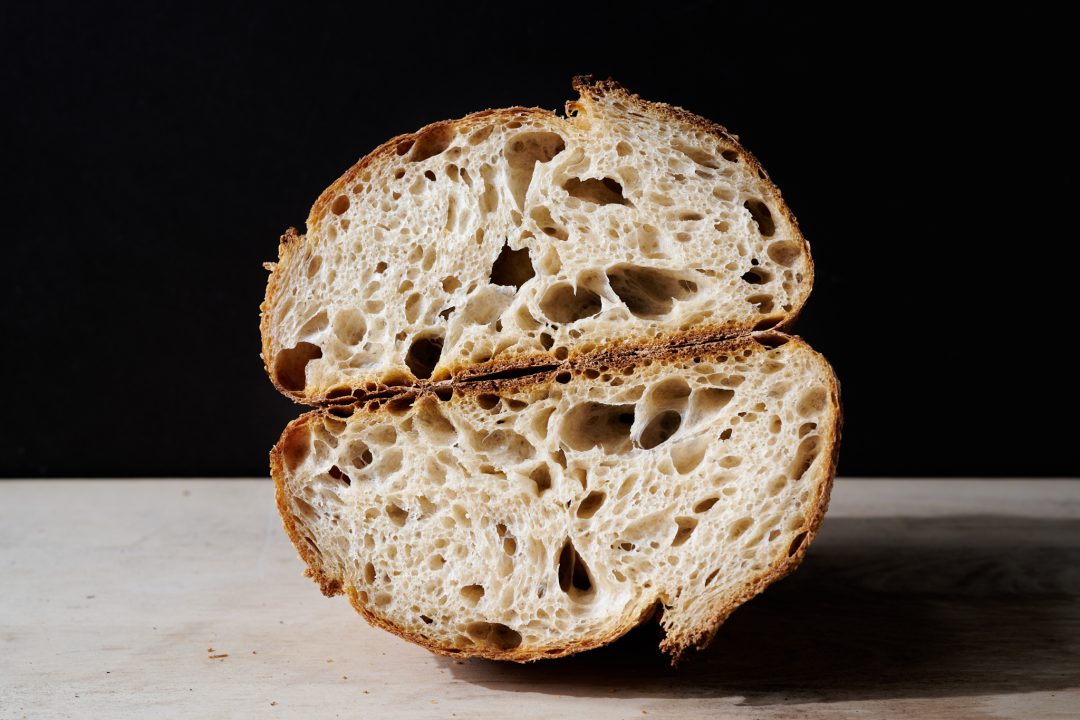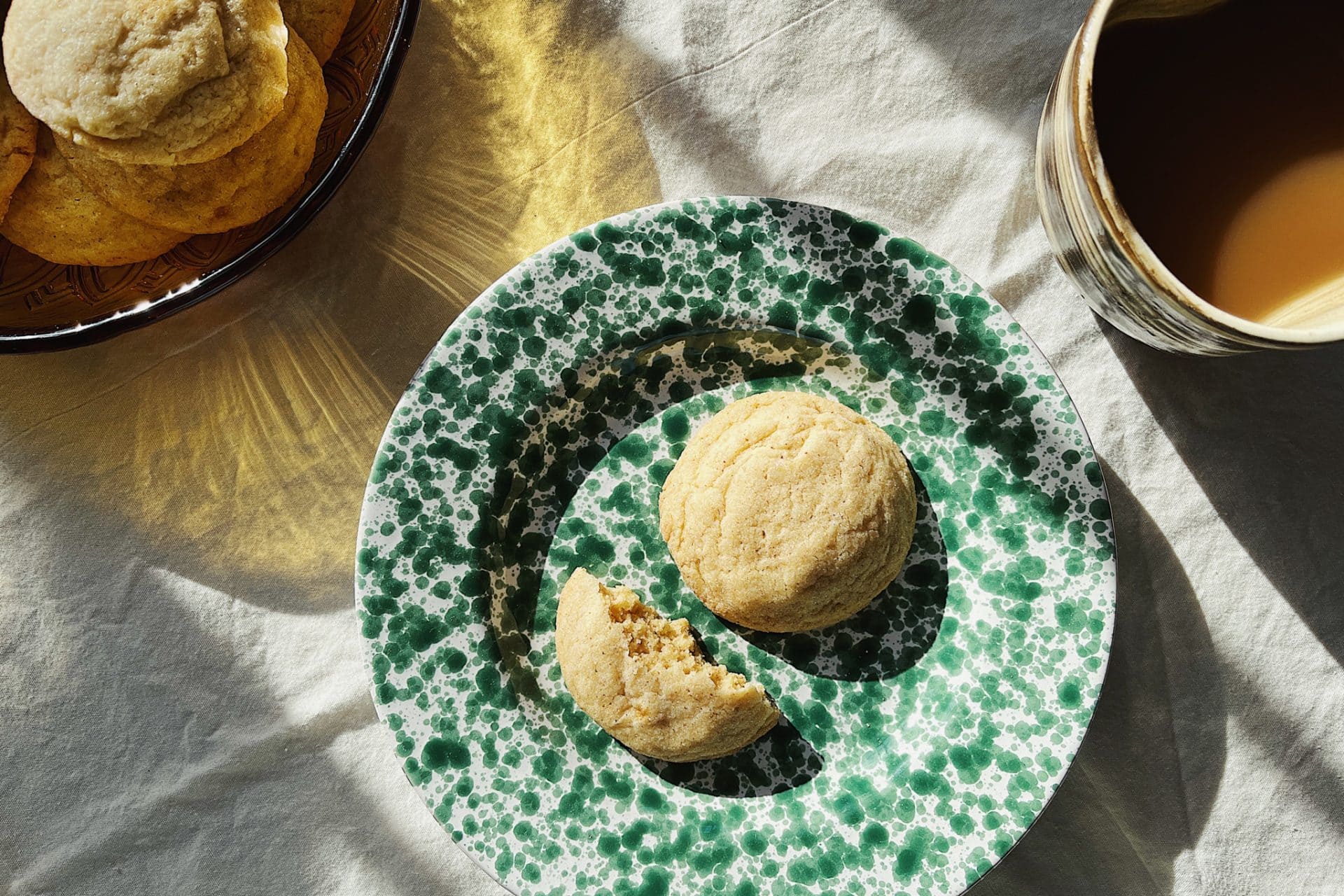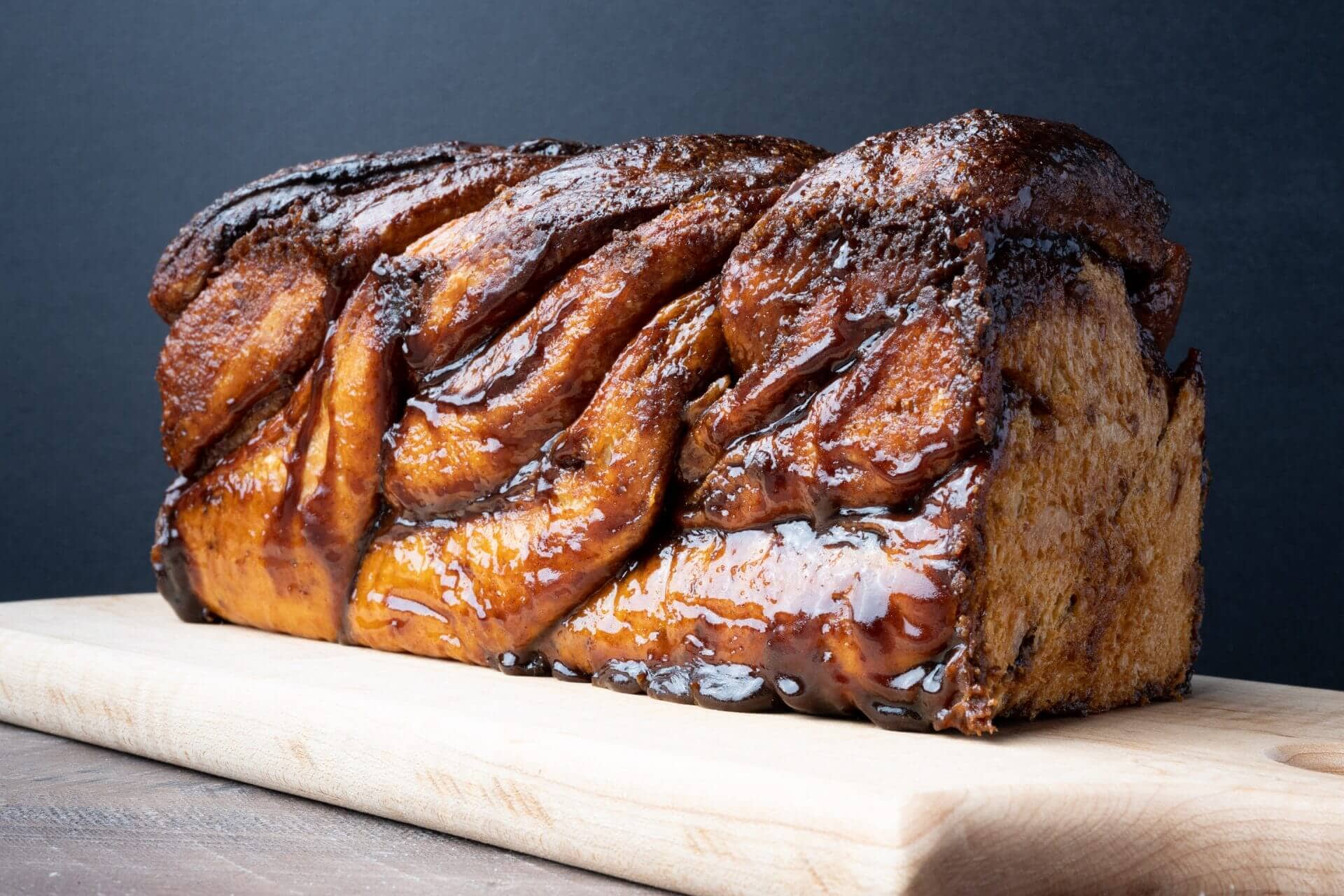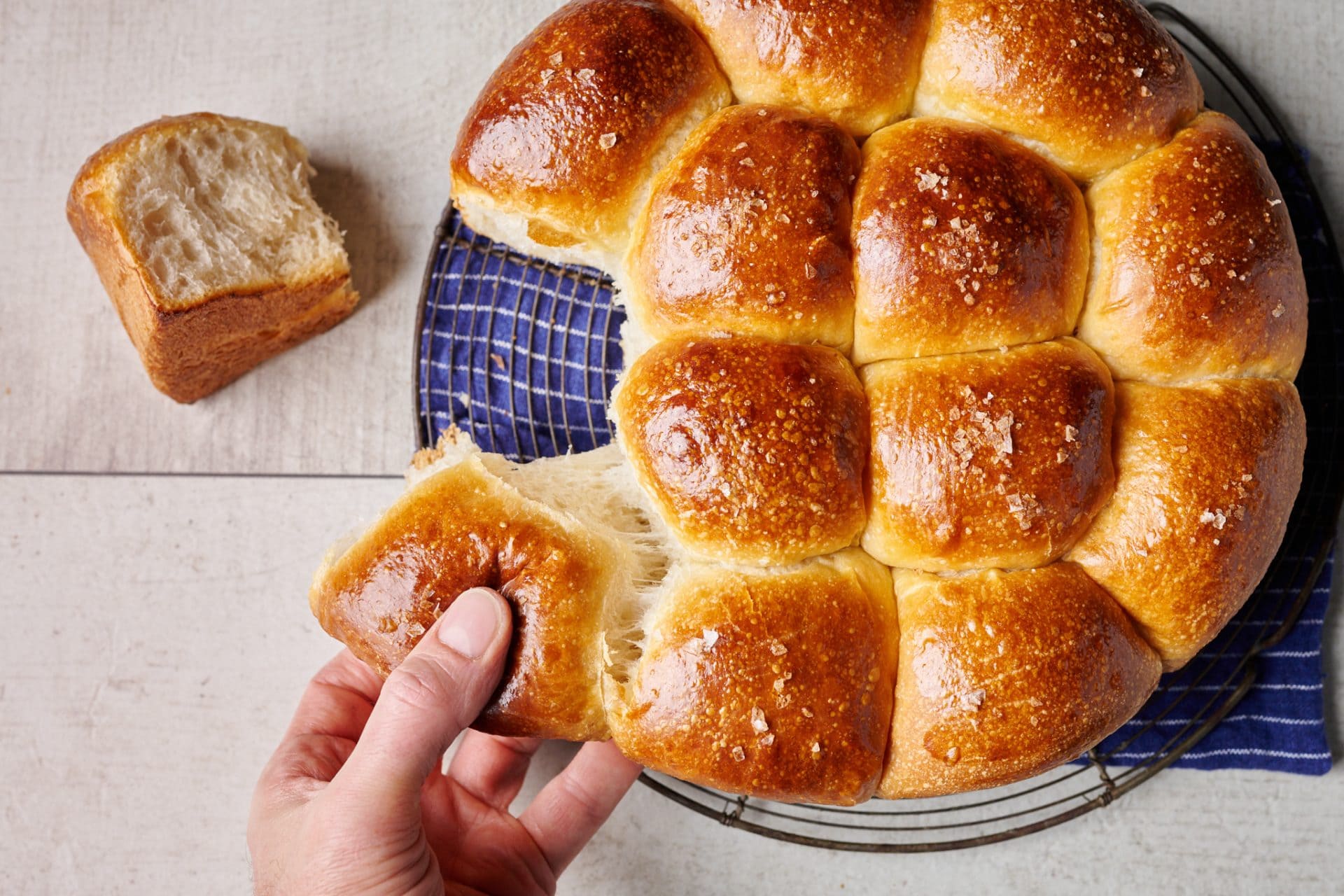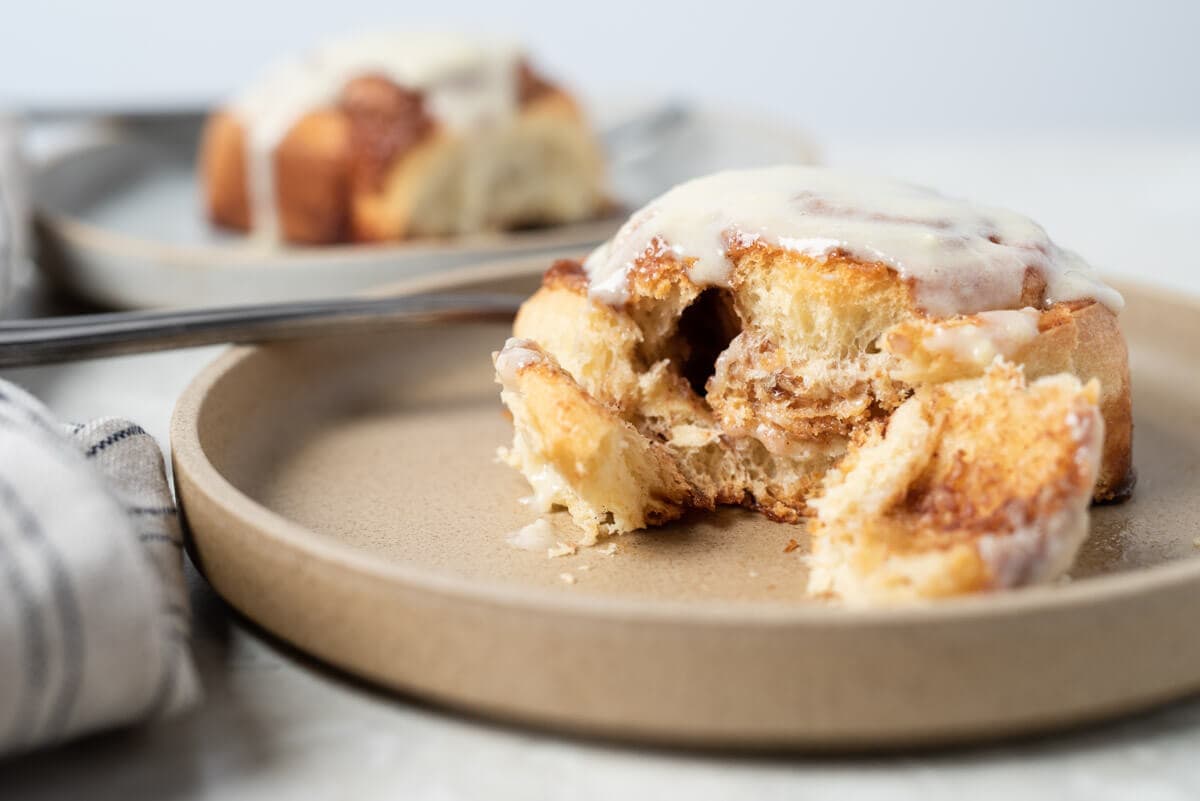If you're like me, winter tends to be a busy baking time. With Thanksgiving and Christmas holidays, plus the natural desire to warm the oven and pull out comforting food, it's a time when your sourdough starter is likely working overtime. Ironically, the cold temperatures slow fermentation activity, making our starter sluggish or resulting in bread that tends to be underproofed. This article will examine techniques for dealing with the cold and how to bake sourdough bread in winter.

I often talk about how important temperature is in bread making, and there's just no getting around it. For a great loaf of bread, it helps to keep the dough warm to encourage vigorous bacterial and yeast activity. Keeping the microbes in our starter, levain, and final dough working as optimal as possible ensures our final loaf of bread is proofed adequately with a pleasing texture and the best flavor.
The tips and information in this post are almost, but not entirely, the opposite advice I give in my post on baking sourdough bread in the summer when temperatures are warm. You're likely faced with an opposite set of problems: an overly active and acidic sourdough starter, runaway doughs, and, eventually, overproofing. Each season requires a slight shift in mindset and different steps to ensure our baking is optimal.
The following are the first things I do when baking sourdough bread during the winter:
First, let's talk about why it's hard to bake sourdough bread when cool temperatures.

Why is it hard to bake sourdough bread in the winter?
For home bakers who typically work with smaller batches of dough, usually around 2 kilograms (like in my Beginner's Sourdough Bread), this smaller mass quickly cools, especially if it's cold in your home kitchen. This cooling of the dough is less of a concern in a bakery with larger batches because a larger mass will take longer to cool (and in my experience, bakeries are usually much warmer thanks to their multi-deck steam-injected ovens).
When it's cold out, fermentation activity slows in our sourdough starter, levain, and final dough. With reduced fermentation activity, we tend to underproof our dough, resulting in bread with excessive rise, split crusts, and usually a dense and gummy interior.
Let's look at a few more signs we might have underproofed dough.
What are the signs of underproofed dough in the winter?
For me, underproofed dough almost always shows itself in a single bake as temperatures begin to drop. The crust will rupture, and the loaf may rise excessively, especially in the middle for a bâtard.
Note that the following signs can also be due to other issues when baking, but here's a list of things I look for:
- excessive rise in the oven.
- erratic ruptures in the crust, or an “ear” that is excessively tall and peeled back.
- dense interior with scattered large holes.
- one-note flavor with a “rough” texture.
How do I tell when my dough is sufficiently proofed in the winter?
Using the dough poke test can be helpful here. I like to gently poke my dough in a few spots to try and determine its proof level at various steps in the process. And while the “poke test” is less accurate for cold-proofed doughs due to the tightening effect on the dough, it still gives you a good sense of its fermentation level. It becomes a much more reliable test for the ambient-proofed (direct) dough.
Poke the dough, and if you see:
- the indentation springs back very fast; it still needs time to proof (be on the lookout for this during the winter)
- the indentation slowly springs back; bake the dough soon
- the indentation stays depressed, bake immediately
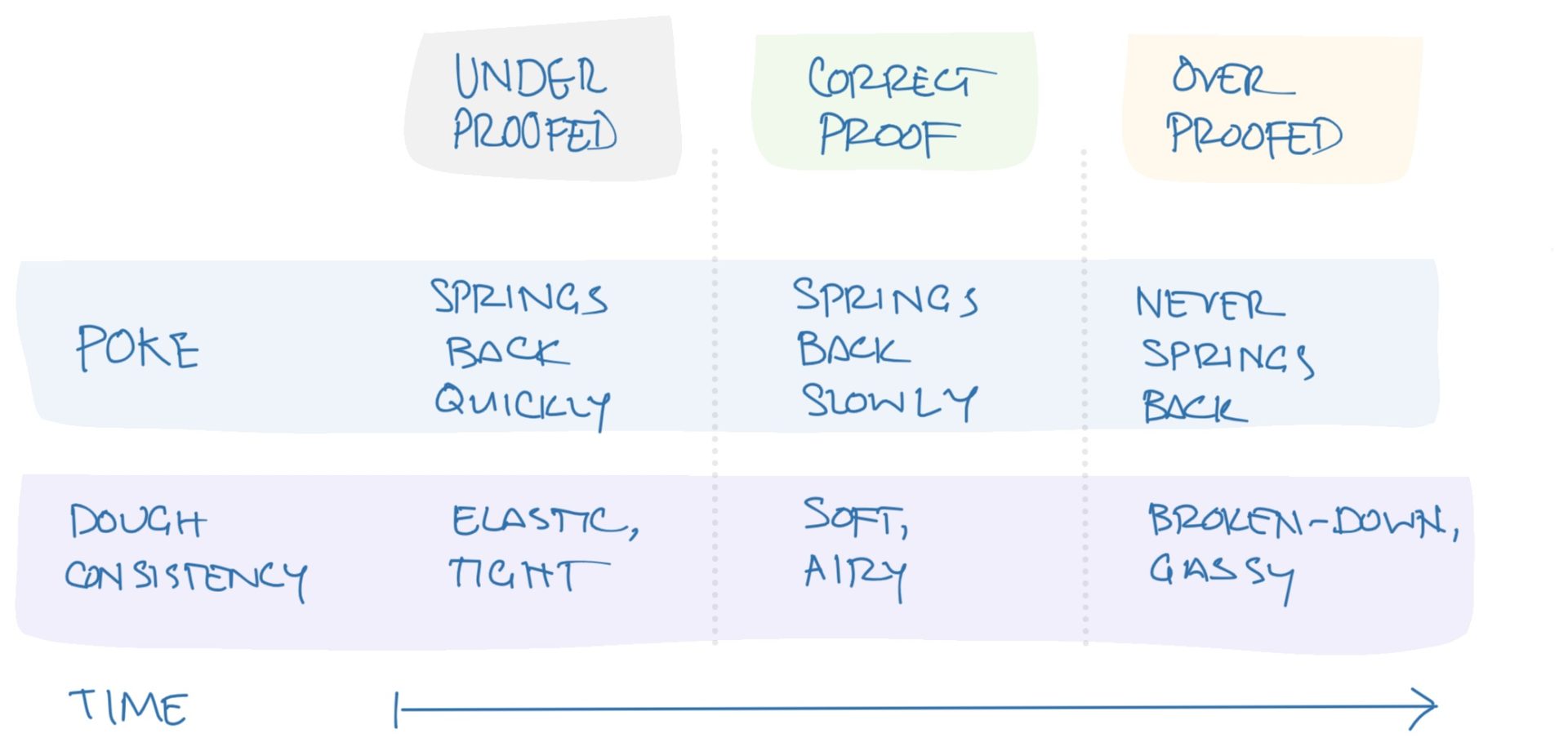
My top 3 tips when baking sourdough bread in the winter
The following tips are what I turn to first when baking in the cold months of the year.
1. Use warm water when mixing
My first method for dealing with cold weather is to warm the water I use to refresh my starter, make my levain, or mix my dough.
First, I measure out all the water called for in my recipe and then take its temperature. Then, using a spreadsheet, quick calculation, or water temperature calculator, I'll determine what I need to heat the water to. Hence, my dough at the end of mixing meets my desired final dough temperature.
If your dough spends significant time in autolyse, take this period into account as the dough will slowly cool to ambient temperature. If it's cold in your kitchen, keep your dough somewhere warm or heat the mixing water to a few degrees above the called for final dough temperature in the recipe.
Use warm water for your starter, levain, and final dough mix.
Warm your mixing water to ensure vigorous fermentation activity in your sourdough starter, levain, and final dough.
2. Use a sourdough starter and a levain when they're ripe
When temperatures are cool, we might find we're using our starter before it's fully ripe. Unfortunately, using a starter early ultimately leads to dough that's underproofed. To ensure we're starting on the right foot, keep your starter and levain warm and use it when you spot the signs of ripeness (a loose consistency, sour aroma, bubbles on top and at the sides, and it will have risen to some degree).
Tips to keep sourdough starter fermentation activity vigorous
The following are steps I take to ensure my starter and levain have vigorous fermentation activity (in order of preference):
- Keep starter in a warm spot. This sounds obvious, but sometimes we fail to realize just how cool some spots in our kitchen are! The top of the refrigerator, near the oven, or a spot below a heating vent are all places that might be warmer in your kitchen. The best spot, of course, would be a dedicated dough proofer.
- Increase starter carryover. My first approach to dealing with cool temperatures is increasing the starter I carry over at each refreshment. When maintaining my starter, I might drop carryover down to 5% in the summer, but in the winter, I might increase this up to 20%, depending on the temperature.
- Use warmer water. Warming your starter by warming the mixing water in the microwave or over the stove will help increase its final temperature to keep it warmer for longer.
- Let starter ripen for longer. Because fermentation activity is slowed in the cold, leaving your starter to ferment for longer can help ensure you're still using it at a ripe state (this assumes temperatures aren't too cold).
- Increase whole grain percentage. Increasing whole grains (especially rye flour) can help increase fermentation activity.
All of the above steps can help you keep your sourdough starter warmer and with increased activity. Sometimes, just one of the above will help, but it's usually a combination of them to ensure my starter is strong and healthy in the coldest months of the year.
Recommended reading: How I Feed My Sourdough Starter
Use your sourdough starter and levain when ripe.
When it's cold it's easy to use your starter/levain before it's fully ripe. However, doing so will mean your dough will need more time or a higher final dough temperature to keep the dough on schedule. Be sure to give your starter/levain more time to ripen if kept at a cold temperature, or warm its mixing water and keep it in a warm spot to keep it vigorous.
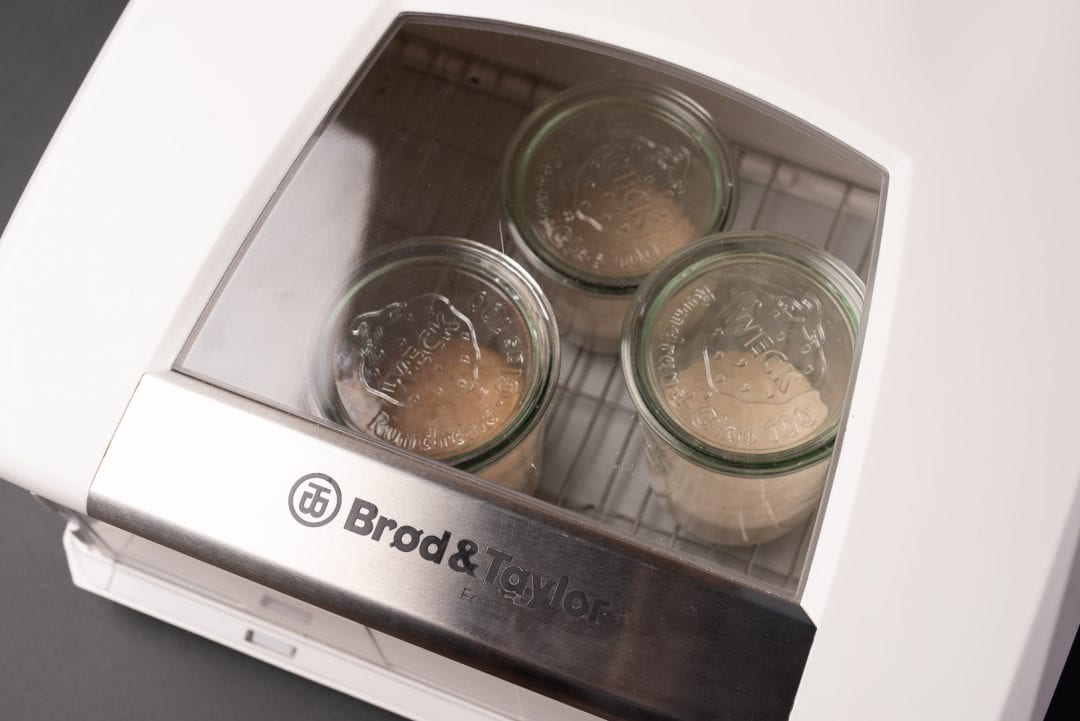
3. Keep your bread dough warm
I like to use a small home dough proofer to keep my starter, levain, and dough warm during the winter. I can keep my dough at a stable 78°F (25°C) in my proofer, which is my preferred temperature for most recipes. This warm temp ensures vigorous fermentation activity.
The larger the surface area, the faster the dough will cool
If you're using a bulk fermentation container that allows your dough to spread out into a thin, flat layer, your dough will have increased surface area and thus will cool (or warm!) faster than if kept in a smaller container. See my baking tools page for my favorite bulk fermentation containers.
Use an insulated bulk fermentation container (or not)
Related to the point above, using a bulk container with thick walls (like a ceramic bowl) can help keep the dough warm if your ambient temperature is cool.
However, having a thermodynamically neutral container may also be beneficial; it has reduced insulation. In this case, a container that doesn't buffer temperature can be helpful if you keep your dough in a dough proofer or spot in your kitchen that's close to your desired dough temperature.
Recommended reading: How to use the Brød and Taylor Dough Proofer
Keep the bread dough warm for vigorous fermentation activity
Use a small dough proofer, your oven with the light turned on, or the microwave to keep your bread dough warm and insulated during bulk fermentation.
A few more suggestions on how to bake sourdough bread in winter
Increase pre-fermented flour percentage
A larger preferment means an increased bacteria and yeast population introduced into our dough. The more microbes, the higher the fermentation rate, which can help keep our cold dough on schedule with a recipe. In other words, we try to offset the reduced temperature (which would mean it would take longer for our bacteria and yeasts to multiply) by starting the dough off with a larger microbe population.
Adjusting this part of the recipe does affect the formula you're following, though, and it should only be used after other measures have first been attempted (keep it warm!).
Watch the work surface temperature when kneading
Mixing and strengthening my dough using the slap and fold technique means my dough will be in contact with my cool granite kitchen counter. If I expect to knead by hand in this way for a long time, I'll typically warm the mixing water even more to offset the cooling effect the counter will have on the dough.
If kneading the dough in a mechanical bread dough mixer, expect the mixer to heat the dough if mixed for a prolonged period—this may be a great thing in the winter!
A few frequently asked questions
Why does my sourdough starter look sluggish in the winter?
Cooler temperatures reduce fermentation activity. Keep your starter warm to help keep it strong and on the same refreshment timeline. Alternatively, keep it slightly warmer and give it more time to ferment before using.
Why does my bread dough underproof in the winter?
Cooler temperatures mean decreased bacteria and yeast fermentation activity. To offset this, you can increase the final dough temperature, pre-fermented flour percentage (levain percentage), or give the dough more time to ferment during bulk fermentation or proof.
What bulk fermentation container is best for my bread dough?
I like thick ceramic bowls because they're primarily nonstick, and the thickness helps insulate the dough and keep it warm (or cool). However, a thin, plastic container can also work well if your ambient temperatures are similar to your desired dough temperature.
What's next?
Due to the cold temperatures, most bakers have trouble proofing their bread dough in the winter. Be sure to review my ultimate guide to proofing bread dough for more tips on combating the cold and ensure your dough is always properly proofed before baking.
With the above advice on how to bake sourdough bread in winter, check out a few of my favorite recipes at this time of the year (bread, pastry, and sweets alike!):


